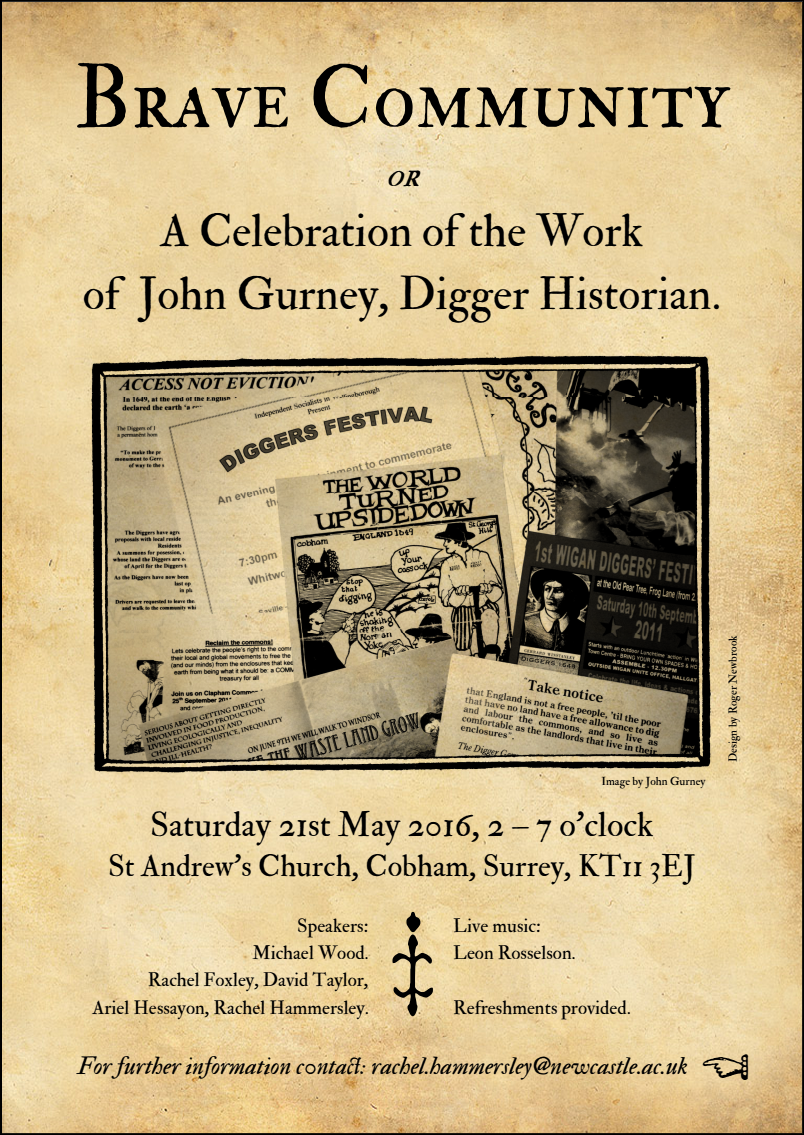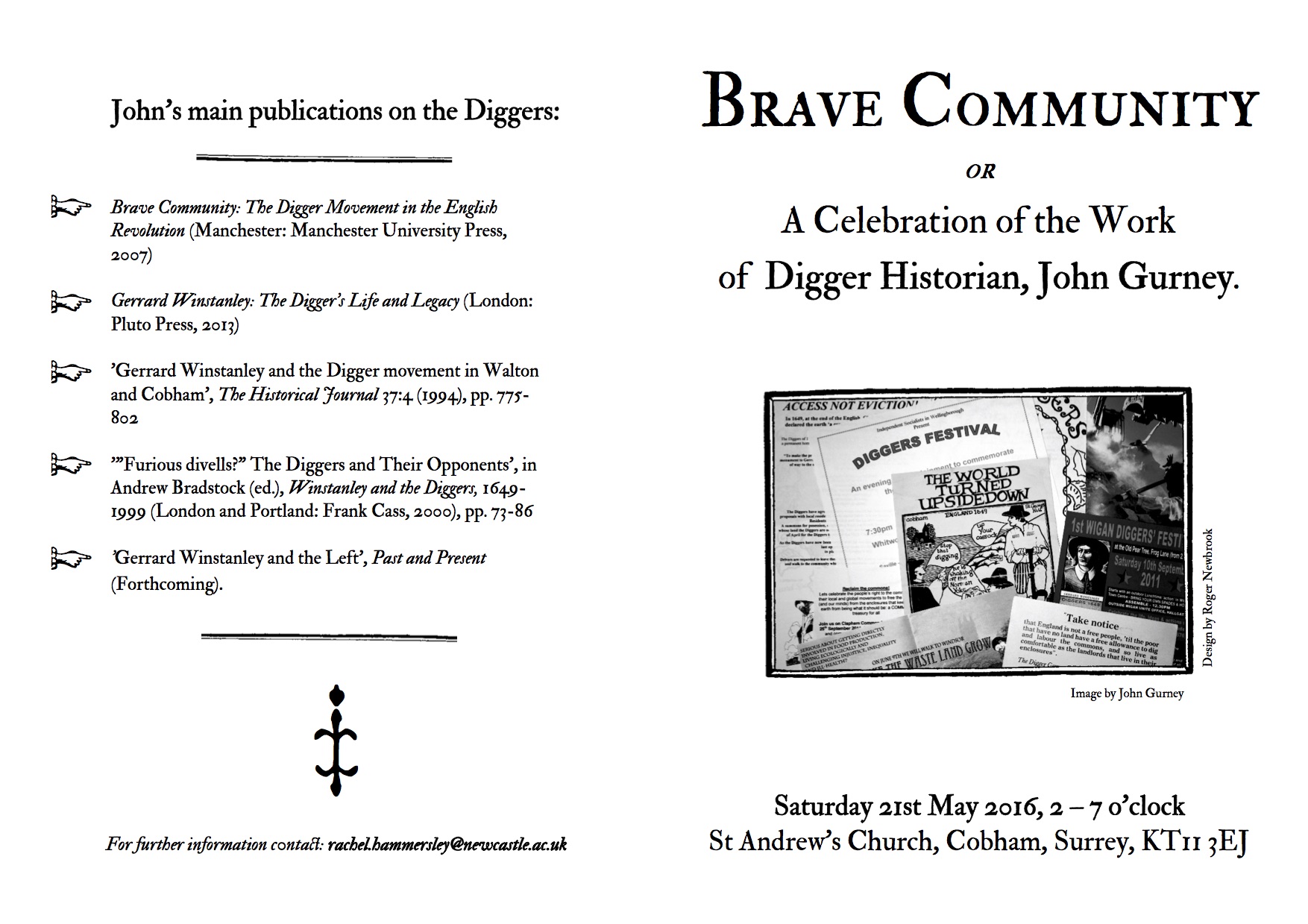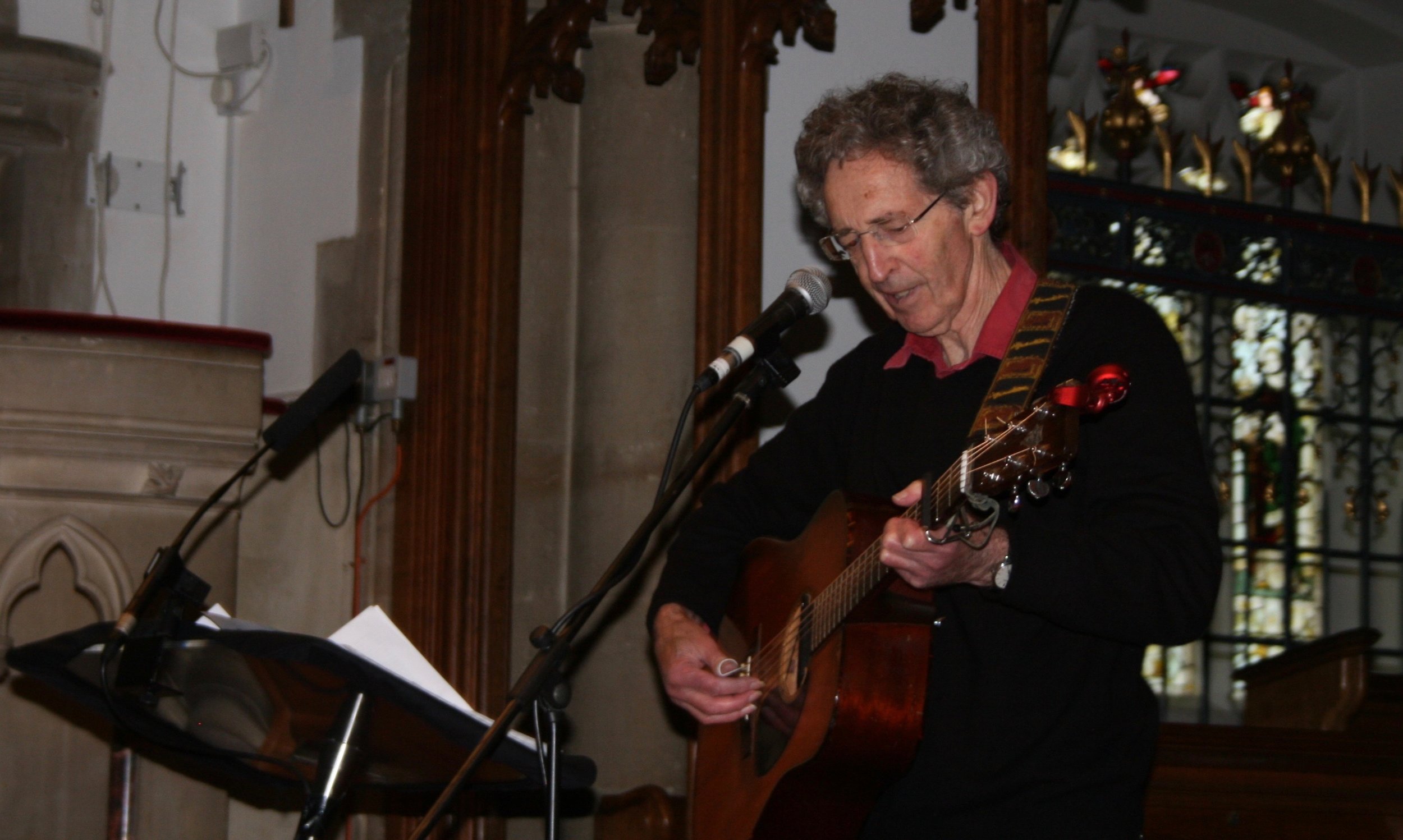Perhaps it was because of his own immersion in the history of seventeenth-century England, and the obsession at that time for memorialisation, or perhaps it is just a natural human instinct, but when my husband John was diagnosed with terminal cancer he became concerned about his own legacy. Besides the bench near to our home that he requested, he was also keen to have a memorial in the village of Cobham in Surrey, the home of Gerrard Winstanley, and the setting for the radical Digger movement’s occupation of common land in April 1649.
John Gurney's thesis and publications. Image by Rachel Hammersley.
Winstanley and the Diggers had been the main focus of John’s research from the time he began working on a DPhil at Sussex University in the 1980s. This focused on the County of Surrey during the English Revolution. He was supervised by Willie Lamont, the inspirational historian of seventeenth-century England. By the time he died, John had written several articles and two books on this subject. His first book, Brave Community: The Digger Movement in the English Revolution (Manchester: Manchester University Press, 2007), sought to set this unusual radical movement in its local Surrey context, demonstrating the extent to which the movement grew out of, and fed on, existing social tensions; and detailing the impact of civil war on the local community. The second book, Gerrard Winstanley: The Digger’s Life and Legacy (London: Pluto Press, 2013), focuses more directly on the Digger leader, tracing both the origins of his ideas and writings, and their subsequent impact (and that of the Diggers’ actions) on politics and popular culture right up to the twenty-first century.
Brave Community poster, designed by Roger Newbrook.
Given the focus of his first book, an event in Cobham seemed a particularly appropriate way of remembering John. Before he died, he had already spoken to a couple of fellow Winstanley experts about this: David Taylor, an historian based in Cobham who is extremely knowledgeable about the local area; and Andrew Bradstock who organised a commemorative conference on the Diggers in 1999 (the 350th anniversary of the Digger movement). John had himself attended that anniversary conference and had contributed to the resulting collection of essays, Winstanley and the Diggers 1649-1999 (London and Portland: Frank Cass, 2000). Consequently, after John died it was to David and Andrew that I turned for assistance in thinking about a suitable memorial.
Quite quickly we hit upon the idea of organising an afternoon of talks, readings, video clips, and music focusing on Winstanley and the Diggers. My aim was to create the kind of event that John himself would have enjoyed; and to open it up not just to his family, friends and colleagues, but to anyone with an interest in Winstanley and the Digger Movement. I was honoured that Michael Wood, the public historian well known for his engaging BBC Television series ’Story of England’, and more recently for his groundbreaking series on the history of China, agreed to speak. Michael had produced a programme dealing with the Civil War, which touched on Winstanley and the Diggers, as part of a series on the history of England for Jubilee year. As a result, he was familiar with both the Digger movement and Cobham, and already knew John’s work. At the same time, John had been particularly impressed by the thoughtful and sensitive way in which Michael engaged with and presented the history of England in his television programmes. Consequently, in so many ways, Michael was an ideal choice. We also managed to secure a panel of Digger experts, including Ariel Hessayon, Rachel Foxley and David Taylor himself, to speak more directly about the movement and its place within a wider radical context. Finally, Leon Rosselson, the acclaimed singer-songwriter who wrote, among many other things, ‘The World Turned Upside Down’, which tells the story of the Digger Movement, very kindly agreed to come and provide musical entertainment.
Brave Community programme, designed by Roger Newbrook.
Leon Rosselson, Brave Community, Cobham, 21 May 2016. Image by Rachel Hammersley.
I called the event ‘Brave Community’ after John’s first book. It seemed appropriate not just because of the reference back to the book, but also because those two words resonated strongly with me. John had been very brave in the face of his devastating cancer diagnosis, and bore everything that this horrendous disease threw at him with a calmness and dignity that both astounded me and simultaneously gave me strength. Since he died, the children and I have had to continue to be brave, as have his parents, his sisters and all who loved him. Bravery is a word that is so often associated with violence, war and aggressive action, yet the immense courage required to calmly continue with life in the face of illness, death and bereavement involves bravery of a much more enduring kind. While to some extent each of us had to face the horror alone, I know that I have drawn great strength and assistance in my darkest moments from what I have come to think of as ‘John’s community’. This is an eclectic group comprised of John’s family, friends - old and new, and colleagues past and present. Many of them attended John’s funeral or wrote to me at that time, and a wonderful number have kept in touch since. They provided me with sustenance by their kind words and by making clear that, lonely as I sometimes felt, I was not the only one who mourned the loss of John Gurney. It strikes me as odd, but at the same time absolutely right, that 'John’s community' has continued to exist and to remain important even in his absence.
Michael Wood, Brave Community, Cobham, 21 May 2016. Image by Rachel Hammersley.
So, approximately 100 people willingly spent a sunny May afternoon in Cobham Church learning about Winstanley and the Diggers and celebrating John’s life and work. Some had travelled a long way to be there These included a group from Wigan, Winstanley’s birthplace, where an annual Digger Festival is held; and another group from Wellingborough, the site of another Digger settlement, and now also the setting for an annual celebration of Winstanley and his comrades. Also attending were a number of Surrey residents with an interest in their own local history.
Frontispiece to John Toland's edition of The Oceana and Other Works of James Harrington (London, 1737). Private Copy. Image by Rachel Hammersley.
Though attitudes to history and death have changed dramatically since early-modern times, as well as always being contested and subject to different interpretations, commemorative events took place then as they do now. One only has to think about the annual marking of the regicide in the late seventeenth century. This included both 30th of January sermons hailing Charles I as a martyr and gatherings of those who lamented the passing of the Good Old Cause (even if they did not actually do so by devouring a calf's head as the mischievous publican and anti-Whig satirist Ned Ward claimed). Of course, gatherings and events are notoriously difficult for historians to recover in detail, and so it is perhaps not surprising that no records remain about commemorations of Harrington after his death. However, we do have an important commemorative object which, just like our event for John, celebrates Harrington’s work and seeks to demonstrate the continuing relevance and importance of it. This object is John Toland’s beautiful and richly decorated frontispiece to his edition of Harrington’s political works.







